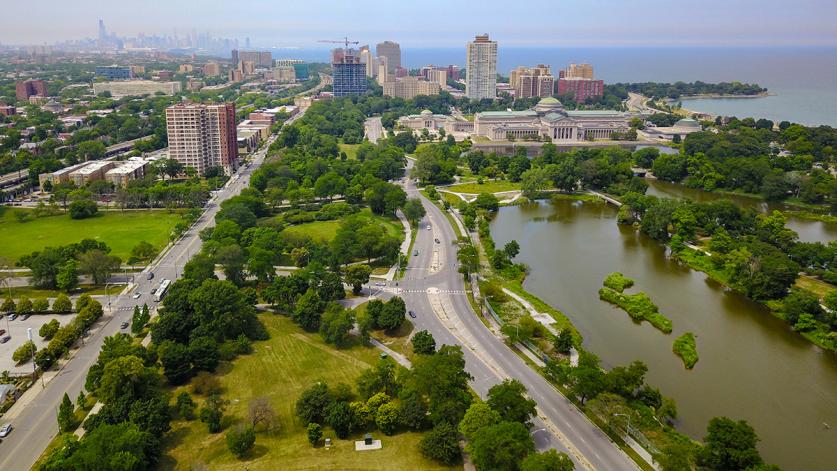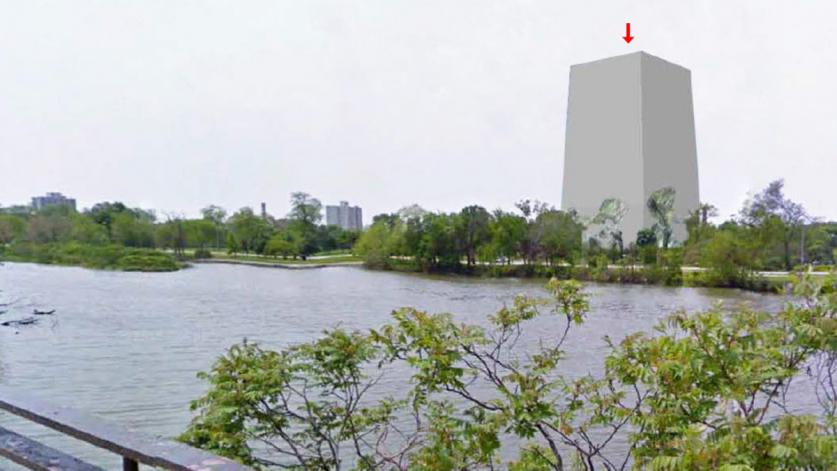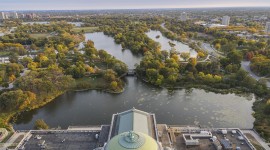OPC MOA is DOA - Next up is NEPA
Nearly three years after the first Section 106 review of the proposed Obama Presidential Center (OPC) in Chicago’s historic Olmsted-designed Jackson Park, a final Memorandum of Agreement (MOA) has been released. For supporters of the OPC, this is an important milestone on the road to construction in the park. For opponents of the confiscation of some twenty acres of parkland held in public trust, the proposed mitigation measures in the document do nothing to offset the well documented adverse effects the OPC would have.

For The Cultural Landscape Foundation (TCLF), the MOA is DOA.
The review process pursuant to Section 106 of the National Historic Preservation Act is typically a staid and wonky affair in which “official consulting parties,” subject area experts and agency personnel, meet and discuss adverse effects a project would have on a resource such as Jackson Park and then negotiate measures to avoid, minimize and/or mitigate the adverse effects. The ensuing MOA would document the results.
As managed by the Federal Highway Administration (FHWA), the Section 106 review process became the bloated analog of an unwieldy community meeting. Dozens and dozens of OPC proponents and cheerleaders became consulting parties, which they are legally entitled to do. However, no serious and sustained effort was expended to make sure participants focused on the core task at hand, developing measures to avoid, minimize and mitigate the adverse effects. Rather, OPC proponents were permitted to run out the clock with “rah rah” comments. Doing so effectively diminished the integrity of the review process itself (the same scenario is being employed in the management of the Hirshhhorn Sculpture Garden Section 106 review where the most recent meeting swelled to 81 participants).

The first seven pages of the 109-page MOA contain twenty “Whereas” clauses that lead to a “Now, Therefore” conclusion followed by a list of anemic mitigation measures. This is followed by 96 pages for the signatures of 96 separate “official consulting parties,” most of which are OPC proponents. Managers of this review process may have met the letter of the law, but whether they met the spirit of the law is definitely open to question.
While the Section 106 process is designed to focus on the impact on historic resources, another review pursuant to the National Environmental Policy Act (NEPA) is underway to assess the impact of the OPC on the environment. This is being managed by the National Park Service (NPS).

In late September NPS released an Environmental Assessment (EA), which is a concise review of the project. Detailed and substantive comments were filed by Jackson Park Watch and Protect Our Parks (POP) that highlight fundamental failures in the assumptions and reasoning in the EA. What’s important is what happens next. Either NPS will issue a Finding of No Significant Impact (FONSI), a conclusion that there will be no environmental impacts or there will be a call for an Environmental Impact Statement (EIS), which is a far more detailed investigation of the potential impacts. That call is expected in the next few months.
Finally, there is still the lawsuit by POP challenging the legality of the parkland confiscation. The plaintiffs have pledged to go all the way to the U.S. Supreme Court for a decision. As noted in an OPC Landslide update last month, the newest associate justice, Amy Coney Barrett, ruled against POP this past August while on the 7th Circuit Court of Appeals, citing a lack of standing. Should this reach the Supreme Court, will Justice Barrett have to recuse herself?







